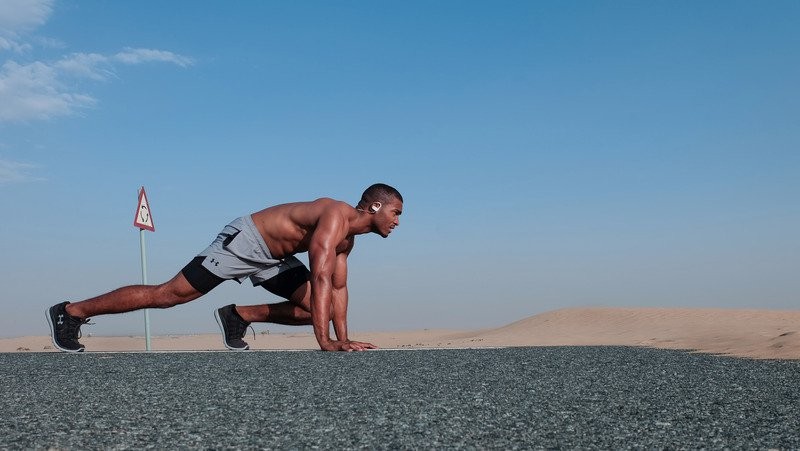Running: Strike Patterns and Shoewear Advice
Since we are on the theme of running lately, let’s dive into some running topics and tips going into this summer for your runs and races!
Rearfoot strike vs midfoot strike
This is a hot topic in the running industry. “Rear- and midfoot” strike is in reference to what part of the foot first makes contact with the ground; we call this the “stance phase.” On each side of the aisle an argument will cite different reasons for each. It is of much concern how to strike the foot because without getting too into biomechanics, when we decrease the energy being spent on our gait, we in turn fatigue less quickly and therefore will have improved running times. That’s why there is so much emphasis on finding out what gait pattern is best!
Before going further, it is worth adding, you will see the “forefoot” strike here and there, but in reality, this type of stance phase is generally only regarded or recommended during sprinting actions for better propulsion forward. The majority of recreational runners are either rear- or midfoot strikers so we will discuss them more accordingly.
Despite arguments on both sides, the fact is, at the end of the day “people select a specific running pattern that is metabolically most efficient for them”(1) as there is no advantage metabolically between the two styles. Also worth noting is, “there is no difference in incidence or running related injuries between rearfoot and forefoot strikers.”(2) Although there IS a correlation to the type of injury you may have based on where you plant your foot, there isn’t sufficient evidence to say one is safer than the other; it’s simply just a different way to transfer the energy from the ground.
So what conclusions can I draw from this? Well…there is no PERFECT way to run. The best way to prevent injuries is going to be handling your load, strength training and mobility routine effectively and usually aren’t dictated by your gait and running pattern. Although we may coach you on some cues or better motor control here in the clinic to get you out of pain, the best advice to run efficiently is simply however feels most natural for you!
What type of shoes should I wear?
This again, is variable. From your goals as a runner to your foot mechanics/shape. There is a propensity as of late gravitating towards a more minimalist type of shoe. (This means less material so that the foot can be in its natural environment). For good reason, as our feet necessitate input from the ground for better proprioception and overall economy.
With that said, we can’t go from the average shoes we wear on daily basis all day long straight into training in minimalistic shoewear with the continued mileage and programming that you were doing. We must alter our training somewhat. It is important to gradually transition into this type of shoewear if that is your goal. It can feel more natural and have the benefits listed above, but without all the support of a normal running shoe, you may be prone to injury if you don’t change your programming somewhat. Additionally, different foot shapes will respond differently to wearing a minimilistic shoe.
Otherwise, most people have luck with a shoe that offers enough support to prevent injury, but light enough to not feel bogged down on your runs. This is usually a person to person preference and is recommended once they find a brand they like, to stick with it. (Mine is Brooks; although I am sure there are other great shoes and brands, this is just what I have run in for years and never had any issues…so why fix what’s not broken?)
So in conclusion: your shoewear depends on what you’re trying to achieve, what type of support you’re looking for, “type” of foot (high-arched or flat-foot), and even brand preference.
Clinic services
We see plenty of athletes here at ICT MJC and that includes runners! Despite your strike pattern and shoewear a lot of the time simply being personal preference, we do offer services here that can improve your performance. We conduct gait and movement analysises for tips on improving your running economy and areas of limited mobility. Additionally, if you need arch supports, we work in conjuction with a provider that offers a personalized assessment based on your gait and foot structure. Within a couple weeks we recieve the insert that will allow for better support depending on your needs.
Oftentimes, improving performance simply means getting out of pain! Chiropractic services here for athletes and runner's alike help keep you out on the field/races and out of pain. Dry needling, cupping, active release technique (ART), Graston/FAKTR and kinesiotape are all used in some capacity for different patients to get them back to doing activities they love!
References
1./2. Injury Free Running: How to Build Strength, Improve Form and Treat/Prevent Injuries by Thomas Michaud
About the author
Dr. Sam Reals’ empathy for people in pain motivates him to learn the most up-to-date treatment standards and rehab protocols, encouraging patients to incorporate exercise long after their care plan has concluded. Dr. Sam Reals believes it is only through exercise that people can unlock their true potential and increase longevity to a happy, fulfilling life.
